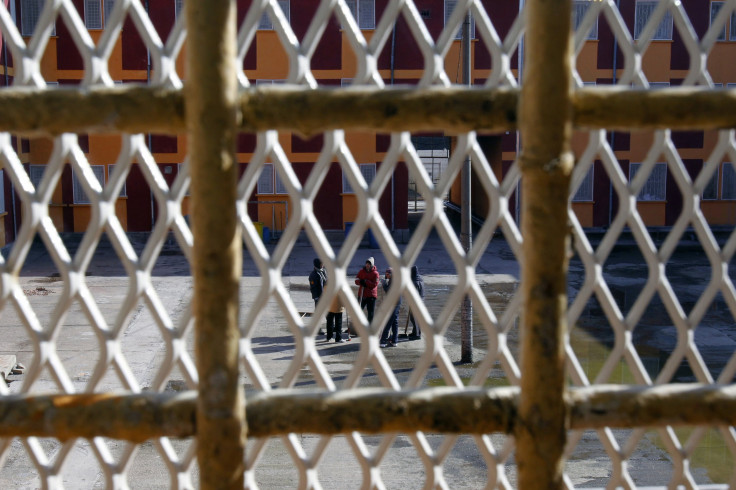HIV Rates Could Be Cut By Putting Fewer Men In Prison: How Mass Incarceration Affects Our Health

Men who are released from prison back into their communities drive up the rate of HIV transmission, a new study published in Social Science & Medicine states. University of Michigan researchers created a computer model that studied mass incarceration — or the huge amount of people in the United States who are jailed — and how it has an impact on sexual partners and HIV transmission in society.
The authors posit that a man who is thrown in prison is less likely to remain monogamous in a relationship, and once he’s back in the community, he’s also more likely to have a higher number of sexual partners. Based on this particular study, higher levels of prisoners were associated with an increase of sexual partners in the community. The study doesn’t entirely clarify why the two were linked, but the authors refer to several other studies that have shown that high incarceration is associated with more risky sexual behavior among both men and women.
Using a computer model of 250 simulated people in a small community, the researchers tested one simulation in which no one was incarcerated to see how many sexual partners people would have. Incarceration was added into a second simulation using data from past studies that found male inmates were more likely to end monogamous relationships while in prison. The researchers found that the second simulation resulted in a higher number of sexual partners for both males and females in the community, especially if the prison sentences were harsher and longer. This suggests that long-term prison sentences only make things worse in the community.
“Our model showed that high levels of incarceration likely play a role in community-level sexual behavior, and are likely detrimental in terms of sexual risk for HIV and other STDs,” Dr. Andrea Knittel of the University of California, San Francisco, said in the press release. “It supports the assertion that mass incarceration has complicated and far-reaching unintended consequences, and may have significant public health implications.”
HIV Among Prisoners
The risk of contracting HIV or another blood-borne virus (BBV) is higher in prison than in the rest of society, mainly due to frequent use of shared needles. “Prisons are recognized worldwide as important sites for transmission of blood-borne viruses (BBVs),” the authors of a 2004 study write. “[M]any prison entrants have histories of injecting drug use, and thus already have high prevalences of BBVs. Second, the lack or under-supply of preventive measures (such as clean needle and syringes or condoms) in most prisons, combined with extreme social conditions, creates extra opportunities for BBV transmission.”
The authors of that study note that sharing needles, sexual activity, and even tattooing in prisons increase the risk of BBV transmissions, including HIV. “Public health policy must involve all sections of the community, including prison inmates, if we are to reduce transmission of HIV and other BBVs.”
Fortunately, HIV rates have been decreasing in prison just as they have in the rest of society for the past several decades. But even if public health measures aim to provide prison inmates with more HIV awareness and prevention methods like condoms, it may not impact the other issue here — a tendency for inmates to end monogamous relationships and increase their number of sexual partners.
Benefits Of Monogamous Relationships
The research opens up the possibility that sending fewer men to prison would preserve more monogamous relationships, which in turn may have a positive public health impact. Research has shown that marriage is linked to better heart health, mental health, and longevity — while loneliness has been shown to contribute to anxiety, depression, and other chronic diseases. But perhaps what’s most relevant to the study is that more people in monogamous relationships would, in theory, reduce the number of HIV and other BBV transmissions. More research will be needed in order to back that theory up.
The study only focused on male incarceration, but what would be the results of a study that included female incarceration as well? There’s currently no study on how female incarceration impacts sexual partners in a community, though the results may not be too different. “Future research needs to recognize the many aspects of the relationships of female prisoners, and consider the collateral consequences of imprisonment in this context,” Helen Codd writes in her book, “In the Shadow of Prison: Families, Imprisonment and Criminal Justice.” “[M]en, even if they are in relationships with imprisoned women at their sentence, do not tend to ‘wait around’ and maintain the relationship.”
Knittel and her team’s study is the first to examine the effect of male incarceration on the instability of sexual relationships in a community, and while it may not have any real-world solutions, it offers food for thought when it comes to integrating former inmates back into society.
“The results suggest that reducing incarceration and creating a more open criminal justice system that supports the maintenance of inmates’ relationships to reduce instability of partnerships for men who are incarcerated may have important sexual health and public health implications,” Knittel said in the press release.
Source: Knittel A, Snow R, Riolo R, Griffith D, Morenoff J. Modeling the community-level effects of male incarceration on the sexual partnerships of men and women. Social Science & Medicine, 2016.



























